
The polarization probe more than just the density or temperature fluctuations at recombination. Because the polarization pattern is a projection of the quadrupole anisotropy, any source of quadrupole anisotropy leaves its imprint in the polarization.
In general there are three sources to the quadrupole anisotropy at recombination:

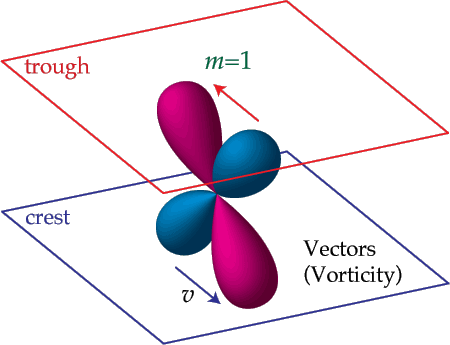
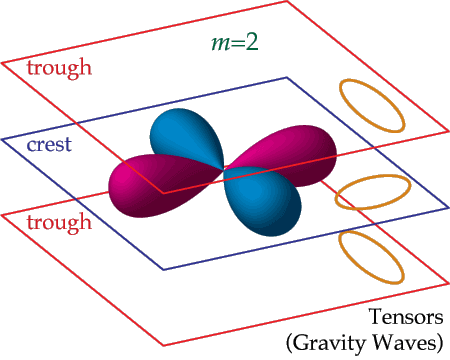
Lobes the directions of the hot and cold photons. Notice that the hot and cold lobes are separated by 90 degrees due to their quadrupole nature. Planes represent the flucutation in intensity of the underlying plane wave fluctuation.
The first is the acoustic density perturbations described above. Here the movement of the photons from hot to cold regions produces a symmetric quadrupole moment (symmetric to rotations about the plane wave axis). Vorticity in the plasma will create a different type of quadrupole due to the Doppler shift associated with the velocity; fortunately vorticity perturbations are predicted to be negligible by recombination.
A passing gravitational wave causes an anisotropic stretching of space and correspondingly the frequency of CMB photons. This also produces a quadrupolar variation in the temperature. Importantly, it is not symmetric like the density quadrupole. This asymmetry causes a "handedness" to the pattern of polarization.
Let us consider in a little more detail how the quadrupole moment determines the polarization pattern. Take the case of density fluctuations. Recall that the observed polarization is aligned with the cold (red) lobe of the quadrupole. As we observe different angles with respect to the direction of the plane wave, we see different projections of the quadrupole moment:
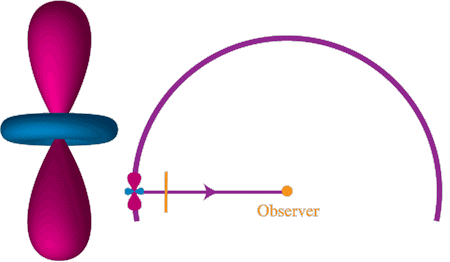
where the rotation is for a fixed line of longitude on the sky. The orange line represents the magnitude and orientation of the resulting linear polarization.
The pattern across all angles becomes (yellow lines)
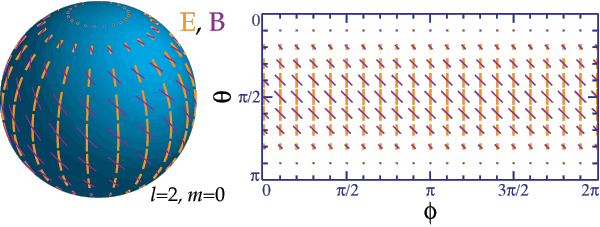
Notice that the polarization pattern is highly symmetrical. In particular the polarization is always going in the North-South (up-down) direction and is independent of longitude.
Now consider the quadrupole generated by a passing gravitational wave. Changing the viewing angle, changes the projection of the density and gravitational wave quadrupoles differently:
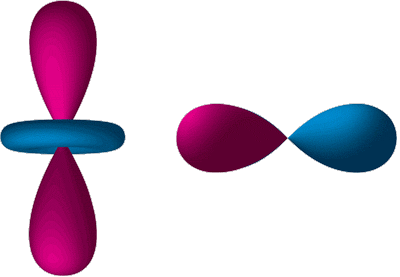
where we have chosen a specific longitude and rotated in latitude. The pattern across all latitudes and longitudes becomes (yellow lines):
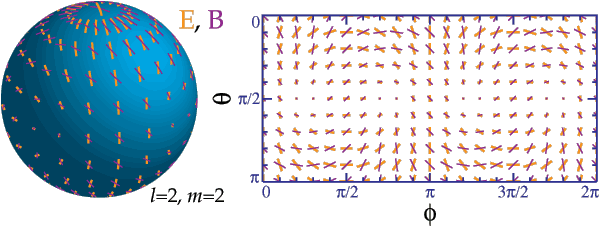
In particular, notice that the pattern is no longer all North-South or even East-West but also have Northeast-Southwest and Northwest-Southeast components. This lack of symmetry is what distinguishes polarization by gravitational waves vs. by density fluctuations as we shall see.